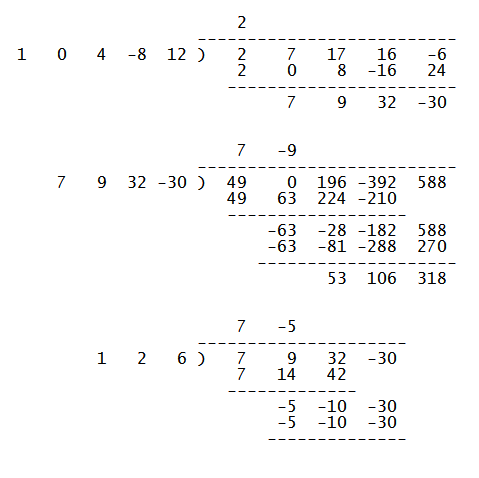What is an example polynomial division problem?
1 Answer
What is the GCF of
Explanation:
The GCF of two positive integers can be found using this method:
-
Divide the larger number by the smaller to give a quotient and remainder.
-
If the remainder is
#0# then the smaller number is the GCF. -
Otherwise repeat with the smaller number and remainder.
For example:
#342 / 24 = 13# with remainder#12#
#24 / 12 = 2# with remainder#0#
So the GCF of
We can do the same with polynomials.
For example:
What is the GCF of
Solution
We can divide polynomials by dividing their coefficients, not forgetting to include
In the following long divisions I have premultiplied the dividend in the second division by

So:
#(2x^4+7x+17x^2+16x-6)/(x^4+4x^2-8x+12) = 2" "# with remainder#7x^3+9x^2+32x-30#
#(49(x^4+4x^2-8x+12))/(7x^3+9x^2+32x-30) = 7x-9" "# with remainder#53x^2+106x+318 = 53(x^2+2x+6)#
#(7x^3+9x^2+32x-30)/(x^2+2x+6) = 7x-5" "# with remainder#0#
So the GCF is

